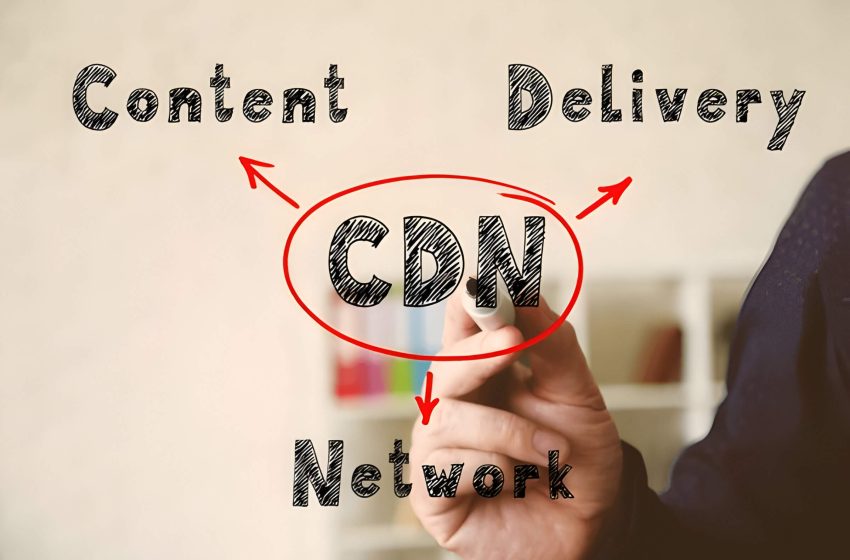What is a CDN and How Does It Work? A Guide to Content Delivery Networks

Content Delivery Networks (CDNs) have revolutionized online data distribution, addressing challenges in the digital era. These globally distributed server networks improve website performance, user experience, and cybersecurity. We’ll explore how CDNs function and why they’re crucial to modern web infrastructure.
The Basics of CDN
A Content Delivery Network (CDN) is a geographically distributed network of servers designed to enhance the speed and reliability of web content delivery. At its core, a CDN works by storing copies of website content on multiple servers located in various strategic locations worldwide. This distributed approach to content delivery significantly reduces the distance between users and website resources, resulting in faster load times and improved overall performance.
CDNs are particularly effective for websites with a global audience, as they help mitigate latency issues caused by physical distance. When a user requests content from a website using a CDN, the network automatically routes the request to the nearest server, ensuring the quickest possible response time. This process not only improves user experience but also helps to balance server load and protect against traffic spikes and potential security threats.
The benefits of implementing a CDN extend beyond speed improvements. They also contribute to increased website reliability, reduced bandwidth costs for website owners, and enhanced protection against Distributed Denial of Service (DDoS) attacks. As the internet continues to evolve, CDNs play an increasingly crucial role in optimizing content delivery and ensuring a seamless browsing experience for users across the globe.
The Core Components of a CDN
A Content Delivery Network (CDN) is a distributed system designed to enhance web performance and user experience. The core components of a CDN work together seamlessly to deliver content efficiently across the globe. At the heart of a CDN is the origin server, which hosts the original content. This server communicates with a network of edge servers strategically placed in various geographical locations, known as Points of Presence (PoPs).
Edge servers play a crucial role in content distribution by storing cached versions of frequently accessed content. When a user requests data, the nearest edge server responds, significantly reducing latency and improving load times. The caching mechanisms employed by CDNs are sophisticated, allowing for intelligent content replication based on popularity and user demand.
Content replication ensures that up-to-date versions of files are distributed across the network, maintaining consistency while reducing the load on the origin server. This process involves complex algorithms that determine which content to cache, how long to store it, and when to refresh it.
Understanding these core components is essential to grasp how a CDN works. By leveraging this distributed network of servers, CDNs can efficiently deliver content to users regardless of their location, ultimately enhancing website performance and user satisfaction.
How Does a CDN Work? A Step-by-Step Explanation
A Content Delivery Network (CDN) operates through a sophisticated process designed to optimize content delivery across the internet. Here’s a step-by-step explanation of how a CDN works:
- Request Routing: When a user requests content from a website, the CDN’s DNS system redirects the request to the nearest CDN server, also known as a Point of Presence (PoP).
- Content Caching: CDN servers store cached versions of website content, including images, videos, and HTML pages. If the requested content is available in the cache, it’s delivered directly to the user.
- Origin Server Communication: If the content isn’t cached or has expired, the CDN server retrieves it from the origin server, caches it, and then delivers it to the user.
- Content Delivery Process: The CDN uses various optimization techniques to deliver content quickly, such as file compression and TCP optimization.
- Server Load Balancing: CDNs distribute incoming requests across multiple servers to prevent overload and ensure optimal performance.
- Real-time Analytics: CDNs continuously monitor network conditions and user locations to optimize routing and caching strategies.
By leveraging this intricate system, CDNs significantly reduce latency, improve website loading speeds, and enhance the overall user experience while reducing the load on origin servers.
Key Benefits of Using a CDN
Content Delivery Networks (CDNs) offer numerous advantages for websites and online businesses. One of the primary benefits is improved website speed, as CDNs distribute content across multiple servers worldwide, reducing the distance between users and the nearest server. This results in significantly reduced latency, ensuring faster load times and a smoother browsing experience for visitors regardless of their geographical location.
Another crucial advantage is bandwidth savings. By caching and serving content from edge servers, CDNs reduce the load on origin servers, leading to decreased bandwidth consumption and lower hosting costs. This is particularly beneficial for websites with high traffic volumes or resource-intensive content.
Enhanced security is another key benefit of using a CDN. Many CDN providers offer built-in security features such as DDoS protection, web application firewalls, and SSL/TLS encryption, helping to safeguard websites against various cyber threats and ensuring data integrity.
Lastly, CDNs excel at global content delivery. By leveraging a network of servers across different continents, CDNs can efficiently serve content to users worldwide, overcoming geographical barriers and providing a consistent experience for international audiences. This makes CDNs an invaluable tool for businesses looking to expand their global reach and improve user satisfaction across diverse markets.
Popular CDN Providers and Their Features

When it comes to Content Delivery Networks (CDNs), several providers stand out in the market. Cloudflare is known for its robust security features and competitive pricing, offering a free tier for basic CDN services. Akamai, one of the oldest and largest CDN providers, boasts an extensive global network and advanced caching capabilities.
Amazon CloudFront integrates seamlessly with other AWS services, making it an attractive option for businesses already using Amazon’s ecosystem. Google Cloud CDN leverages Google’s vast infrastructure to deliver content quickly and efficiently, particularly for websites and applications hosted on Google Cloud Platform.
When comparing CDN providers, consider factors such as network coverage, performance, security features, and ease of integration. Pricing models vary significantly, with some providers offering pay-as-you-go options and others providing tiered plans based on traffic volume.
It’s essential to evaluate your specific needs, such as geographic distribution of your audience, expected traffic patterns, and budget constraints, before selecting a CDN provider. Many providers offer free trials, allowing you to test their services and determine which best suits your requirements.
Implementing a CDN
Implementing a Content Delivery Network (CDN) can significantly enhance your website’s performance and user experience. When integrating a CDN, consider the following best practices:
First, identify which content types are most suitable for CDN delivery. Static assets like images, CSS, and JavaScript files are ideal candidates. Next, configure your CDN properly, ensuring that caching rules are optimized for your specific content and update frequencies.
It’s crucial to choose the right CDN provider that aligns with your geographical target audience and offers features that match your needs. During implementation, use proper URL rewriting techniques to seamlessly direct requests to your CDN.
Don’t forget to implement SSL/TLS certificates on your CDN to maintain secure connections. Additionally, set up proper origin shielding to reduce the load on your primary servers.
After integration, continuously monitor your CDN’s performance using built-in analytics tools or third-party services. Regularly review and adjust your configuration to optimize content delivery and address any issues that arise.
By following these best practices, you can effectively leverage a CDN to improve your website’s speed, reliability, and overall user experience.
Impact CDNs and SEO on Search Engine Rankings
Content Delivery Networks (CDNs) play a crucial role in enhancing website performance, which directly impacts Search Engine Optimization (SEO). By distributing content across multiple servers worldwide, CDNs significantly reduce page load times, a key factor in Google’s ranking algorithm. Faster loading speeds not only improve user experience but also increase the likelihood of higher search engine rankings.
CDNs contribute to SEO in several ways:
- Improved Page Speed: Faster load times lead to better user engagement and lower bounce rates, both of which are positive signals for search engines.
- Enhanced User Experience: Quick-loading pages keep visitors on your site longer, potentially increasing conversions and reducing bounce rates.
- Mobile Optimization: CDNs often include mobile-specific optimizations, crucial for mobile-first indexing used by Google.
- Increased Crawl Efficiency: Faster server response times allow search engine bots to crawl more pages in less time, potentially improving indexation.
- Better Handling of Traffic Spikes: CDNs help maintain site performance during high-traffic periods, preventing negative SEO impacts from downtime or slow loading.
While CDNs themselves aren’t a ranking factor, their positive effects on site performance and user experience can indirectly boost your Google rankings. As search engines continue to prioritize user-centric metrics, leveraging CDN technology becomes increasingly important for maintaining a competitive edge in SEO.
Leveraging CDNs for Optimal Website Performance
Content Delivery Networks (CDNs) play a crucial role in enhancing website performance and user experience. By distributing content across multiple servers worldwide, CDNs significantly reduce latency and improve load times for visitors, regardless of their geographical location. This distributed approach not only enhances speed but also provides a layer of redundancy, ensuring higher availability and reliability of your website.
Implementing a CDN can lead to numerous benefits, including improved SEO rankings, increased user engagement, and higher conversion rates. Moreover, CDNs offer additional features such as DDoS protection, SSL/TLS encryption, and real-time analytics, further strengthening your website’s security and providing valuable insights into user behavior.
As the internet continues to evolve and user expectations for fast, seamless experiences grow, leveraging CDNs becomes increasingly important for businesses of all sizes. By carefully selecting and implementing the right CDN solution for your specific needs, you can ensure that your website remains competitive, performant, and capable of delivering content efficiently to a global audience.